MULTIBOOT QUIRKS
WITH AND WITHOUT BOOT MANAGERS
After doing a fair bit of testing multibooting Windows from DOS-W31 to Windows 7, initially just using the native Windows installers but later using several boot mamagers (OSL2000, XOSL and Bootit NG), I've got a much better idea of what works and suits different Windows versions and combinations thereof.
In my opinion based on testing I've done:
- Windows boot menu is the simplest option for multiple 2K+ installs (2K-XP-6-7 and optionally <1> only w9x OS) as 2K and up handle multibooting just fine. All boot files are on partition 1 and the standard Windows boot menu(s) are used so there's no learning curve to understand a boot manager
- OSL2000 is the simplest option for up to 4 w9x (w31-95-98-ME) installs on primary partitions (it's not well suited to multiple 2K+ installs as these all put their boot data on partition 1 so OSL has superfluous menu items) - the installs work fine, the boot menu just looks a little odd with essentially duplicate items
- XOSL is almost as simple as OSL2000 but has a nicer GUI and a few more options. It also handles up to 4 w9x (w31-95-98-ME) installs on primary partitions but like OSL2000 is not well suited to multiple 2K+ installs for the same reason as OSL2000
- Bootit NG is the best option for multiple stand alone installs (= no dependency on any other partition) for any Windows version from 95 to 7 (and 8, 10, 11) using multiple primary partns (tested with 15) and has the best set of features - but then, it's a shareware product and is still fully supported, whereas OSL2000 and XOSL are freeware
- And lastly, while it's possible to boot any mix of DOS-w31 / WIndows 9x / WIndows 2k+ it does need some planning and choosing the most appropriate method (manual or boot manager). Boot managers such as OSL2000, XOSL an Bootit NG can certainly lessen the frustration.
But I Just Want To Know What's Best For Booting A+B+C . . .
OK . . . here are my suggestions:
* I want to multiboot DOS-W31 + W95 + W98 + ME
Both OSL2000 or XOSL will do the job just fine and I think OSL2000 has the edge as it doesn't need a
dedicated install partn and installs to the MBR.
* I want to multiboot W98 + 2K + XP + W7
Use the Windows installers, working old to new (98>2K>XP>7) and use Windows boot menu(s). Note if
there's one w9x install it must be on partition 1 as FAT32
* I want to multiboot all Windows from W31 - W11
Bootit NG is the best option as you can create and boot from >4 primary partitions - I've done 12 stand
alone bootable XP installs and also 8 stand alone bootable Windows (Fat16) installs without any problems.
These are only my thoughts and if you want to know for yourself, do the same as I did and install VirtualBox or VMware, download the various boot managers and try them out and see what works for what you want to do.
This isn't rocket science.
Now For The Quirks:
Manual Installs:
- The best option for multiple 2K-XP-6-7 (and maybe partn 1 as a w9x FAT32 install for later version boot files) as this method will use the Windows boot menu(s)
- Multiple w9x manual installs are problematic as each version overwrites the other’s boot files (and scripting isn’t able to work around the issue if ME and w95 are installed – incorrect DOS version error in w95)
- Multiple w9x installs that have no dependency on any other partition for their boot files can to be done using the reverse install method, but then need a boot mgr to select the OS
- DOS-w31, w95, w98 and ME can
install to FAT16 partns with FAT32 optional for w95C, w98 and ME
- If the first partn is going to be a DOS install with w31 (FAT16) then later w9x installs (up to ME) can be done as FAT16 and have their boot files on partn 1 (although bear in mind the fact w98, w98 and ME will overwrite each other's boot files, depending on the install order)
- While 2K and XP installs must be done using either a FAT32 or NTFS hard disk, interestingly they can use a FAT16 partn 1 for their boot files. However Vista, w7 and up won't install if partn 1 is FAT16 as they insist on partn 1 for their boot files to be either FAT32 or NTFS. BootitNG boot manager can work around this by doing a stand alone install with the boot files on the install partn
- The
rule of thumb for Windows installs is oldest OS first
-> newest
OS last to minimise the possibility of boot files being overwritten,
i.e., Windows XP installed after Windows 98 will work just fine and
present a boot choices menu, but if it's the other way round then
you'll only be able to boot Windows 98 unless you start editing boot
files - and why do it the hard way ? Might as well reach for the nail
gun
Primary Partitions:
- Must be used for DOS and w9x as these will not install to logical partns (boot managers can do that)
- Unless installed in reverse order (p4-p3-p2-p1) each install will over-write the previously installed OS's boot files - the reverse install is tedious but it will produce separate stand alone (aka SA = no reliance on data in other partitions) Windows installs that can be booted independently of each other
- When separate stand alone installs are done a boot manager such as OSL can then be used for boot select, otherwise the partn to boot must be set active using a partition mgmt tool such as Partn Wiz and if this isn't done the PC will always boot from the OS on partn 1. Boot managers can work around this
- For w95-98 an OS select script can be used as a boot menu by re-copying boot files on partn 1 to be the correct files for booting
- If w95-98-ME are installed the script method can't be used as w95 will return incorrect DOS ver error after running ME
- OSL2000 is the simplest option for up to 4 w31-95-98-ME installs on primary partns
Logical partitions:
- Can be used for 2K+ installs as long as partn 1 is available for their boot files (Bootit NG excepted as this can install to extended primary partitions as SA installs).
- Partn 1 for 2K and XP installs to logical partitions can be either FAT16, FAT32 or NTFS but for Vista, w7 and up partn 1 for boot files can only be FAT32 or NTFS
- Installs to logical partitions will work OK for a mix of w9x FAT32 (on partns 1-3 only) and 2K-XP-6-7 (on primary or logical partns) as the 2K-XP-6-7 installers will create the appropriate Windows boot menu(s) on partn 1 (FAT16 or FAT32 up to XP, FAT32 or NTFS from Vista)
OSL2000 Boot Manager
- Excellent option for up to 4 w31-95-98-ME installs on primary partns as w9x boot files stay on separate partns and don't overwrite the other OS boot files (which are normally on partn 1)
General:
- Freeware with a nag screen (unless registered)
- Must be installed to HD0 MBR
- Must be re-installed after each OS install and settings reset
- Scans HD's on each startup and lists all partitions (even if no OS installed)
- Uses standard MBR structure - 4 primary or 3 primary + xx logical partns
- Uses the "OS/2 partition" method for hiding other partns during OS installs and this option won't work with 2K-XP-6-7 installers
- The only version of OSL2000 I found available for download from the old OSL2000 web site (now on the Internet Archive) is an .exe version which has the files needed to create a floppy image (non bootable)
- This might put some people off using OSL2000 as it involves a bit of futzing around to create either a bootable floppy or CD (or USB), but I'll assume if you're multibooting w9x (either a virtual or physical machine) then you have the nous to create a bootable floppy, CD or USB.
- If you prefer an easy option, then click < here > to download a bootable floppy image of OSL2000 that will automatically boot and start the OSL2000 install / uninstall setup
- Otherwise, try XOSL as it comes in the form of both a bootable floppy image and bootable CD image
w9x quirks with OSL2000:
- w9x installers will ignore hidden partns and can be installed to any primary
- I haven't verified whether OSL2000 can install DOS to partns other than 1 - XOSL seems to do this OK
- w9x installers will not install to logical partns
- Installs DOS-w31 to partn 1 and then w9x to partns 2-4 (8G partn barrier may apply)
2K+ quirks with OSL2000:
- 2K+ installers see the "OS/2" hidden partns and therefore won’t install as they insist on having partn 1 for their boot files
- As long as partn 1 is available then 2K+ will install OK to logical partns (but boot files are on partn 1)
- However, 2K+ installs update the boot info on partn 1 so to boot any 2K+ OS the first OSL menu item must be selected - and this will display the standard Windows OS list to select from (from boot.ini for 2K-XP-6 and bootmgr for 7) the same way as a usual multiboot XP+7 install does
- The actual partns with 2K+ installed show on the OSL menu but can't be directly booted as their boot files are shared on partn 1 and this can be a little confusing as the items appear to be redundant
- DOS install on partn 1 will stop any 2K+ installs as they can't use DOS FAT16 partns for their boot files
XOSL Boot Manager
- Another excellent option for up to 4 w31-95-98-ME installs on primary partns as w9x boot files stay on separate partns and don't overwrite the other OS boot files (which are normally on partn 1)
General:
- Freeware with no nag screen
- Nice GUI similar to w9x
- A few more options than
OSL2000
- Must be installed to a partition - use dedicated partition - see quirk below
- Must be re-installed after each OS install and settings reset
- Does not scan HD's on each startup nor auto hide partns
- Uses standard MBR structure - 4 primary or 3 primary + xx logical partns
- Uses the "OS/2 partition" method for hiding other partns during OS installs and this option won't work with 2K-XP-6-7 installers
- Has both a bootable floppy
image (click < here
to DL >) and a bootable CD image (click < here to DL
>) and I'd suggest using the CD image (see below for why)
w9x quirks with XOSL:
- w9x installers will ignore hidden partns and can be installed to any primary
- XOSL seems to install DOS successfully to partns other than 1 - I installed DOS to partn 3
- w9x installers will not install to logical partns
- Installs DOS-w31 to partn 1 OK and then w9x to partns 2-4 (8G partn barrier may apply)
2K+ quirks with XOSL:
- 2K+ installers see the "OS/2" hidden partns and therefore won’t install as they insist on having partn 1 for their boot files
- As this behaviour is the same as OSL2000 I'm assuming the outcome will be the same, i.e., when booting from partn 1 you'll see the standard Windows OS select menu(s) - not a great concern
- DOS install on partn 1 will stop any 2K+ installs as they won't use DOS FAT16 partns for their boot files
Interesting quirks with XOSL:
If you install XOSL to C: (partn 1) rather than a dedicated partition, you'll notice an interesting quirk.
The quirk is that XOSL can present you with 2 C: drives to choose from to re-install / re-activate XOSL.
I suspect this comes from the fact that if XOSL is installed to an existing partition (which defaults to partn 1 or C:) any OS installed will usually be done by hiding all other partns so the install defaults to what the installer sees as C: - partn 3 for example.
So after the OS install you need to boot from the XOSL floppy or CD image to re-install / re-activate XOSL and when you do that XOSL presents an "install to existing drive" dialog with 2 C: drives listed - partns 1 and 3.
Not really too big an issue as you pick the first C: and it re-installs OK and after all OS's are installed you'll not have to go through the process again.
Interesting though.
And one more quirk - use the CD image rather than the floppy image for install / re-install, as I found XOSL updates the floppy image for some reason and it can throw some weird errors trying to re-install from the floppy. The CD image works fine.
BootitNG Boot Manager
- Very professional and the best option for multiple installs of w9x-2K-XP-6-7+ using the EMBR structure for multiple extended primary partns (tested OK with 15 primary partns incl. 12 bootable primaries)
General:
- Shareware, 30 day trial, but unclear if it de-activates itself after 30 days
- Must be installed to a dedicated partition on HD0 (first HD)
- Has excellent partition manager (can resize FAT32) and boot manager
- Once installed, must be re-activated after each OS install
- Uses the "unpartitioned space" method for hiding other partns during OS installs - works with 2K+
- Click < here > to DL a
bootable floppy install / re-activate / uninstall image of BootitNG
Partition Style:
- Bootit NG can use either:
- Standard MBR structure - 1-4 primary or 1-3 primary + xx logical partns (in which case any partition tool can be used)
- Extended MBR (EMBR) - 1-xx primary partns (in which case only the NG partition tool can be used, as any other partition tool will destroy the EMBR structure)
- On install, the EMBR partn must be selected:
- Default is partn 1 - if this is chosen DOS can't be installed as DOS always uses partn 1 and will overwrite the Bootit NG EMBR data
- User selected (not partn 1) - If the disk hasn't been partitioned then the partitions must be created in NG and one of them (probably the last partn) allocated for the NG boot partition:
- The partition manage dialog will be shown
- Before any partition work, click the left button "EMBR"
- Create partitions
- Select the last partn for EMBR, then click the lower right "Select" button
- Close the partition manage dialog
- NG will then reboot and then OS installs can be done
Standard MBR structure:
- Can use standard MBR for 3 primary and xx logical, in which case any partitioning tool can be used to set up and format the partitions, or the Bootit partition tool can be used
- The Bootit partition tool can also resize FAT32 partitions, which is a nifty trick
- Can install a mix of w9x and 2K+ due to true partn hiding
- If any DOS install is planned, the EMBR partition must not be the first as DOS always installs to partn 1 and will over-write the EMBR partition (D for DOS and D for Dumb)
Extended MBR structure:
- Allows for xx primary partitions
- Only the NG partition tool can be used as others will over-write the EMBR partition data
- Used for eXPerience duodeci boot with 15 partitions OK
Partition Manager:
- Bootit NG has a nice partition manager built in
- Can resize (incl FAT32) and move (“slide”) partns
- The Bootit partn manager must be used if the unlimited primary partitions option is chosen as normal partition software (including MS) will destroy/corrupt the extended MBR partition structure
Boot Manager:
- Allows for up to 8 hard disks
- Allows for xx primary partitions to be created using the extended MBR structure
Boot Item Structure:
Pretty spiffy really.
- Bootit NG has a very flexible approach to building each boot menu item
- For each boot menu item, a bootable OS partition and (optionally) up to 3 other partitions can be added to create what is essentially a virtual disk (view), with multiple partitions visible and usable – note that the OS booted will usually be the one defined in the Bootit partn list as partition 0 (Bootit numbers partns as 0-3 rather than 1-4), with the other partitions used as data partns
- When the OS is booted, the user will see the OS defined as HD0 partn 0 on the virtual disk (view) as C: and the other partitions added to the virtual disk (view) as D: E: etc..
7zip quirk - Note that for Bootit NG extended MBR VHDs, 7zip will only display the data of the last used OS. All other partition data is hidden (I suspect that Bootit flags all other partns as “unpartitioned”).
And for all you smarphone users (the greatest oxymoron of all time) here's a picture or two:
(right click and select "open in a new tab" for a larger view)
OSL2000:
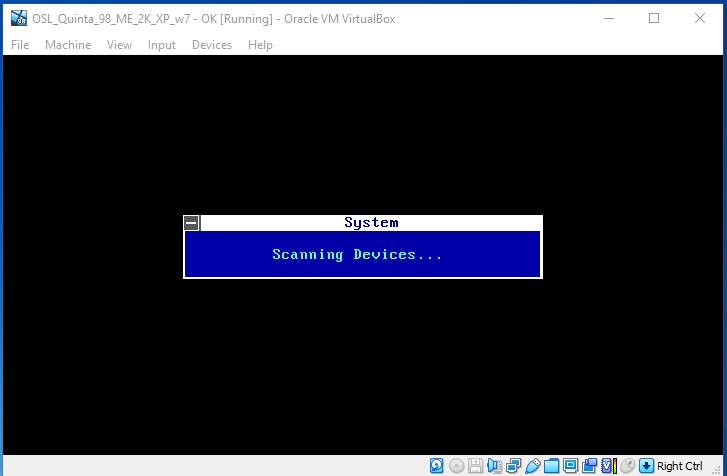
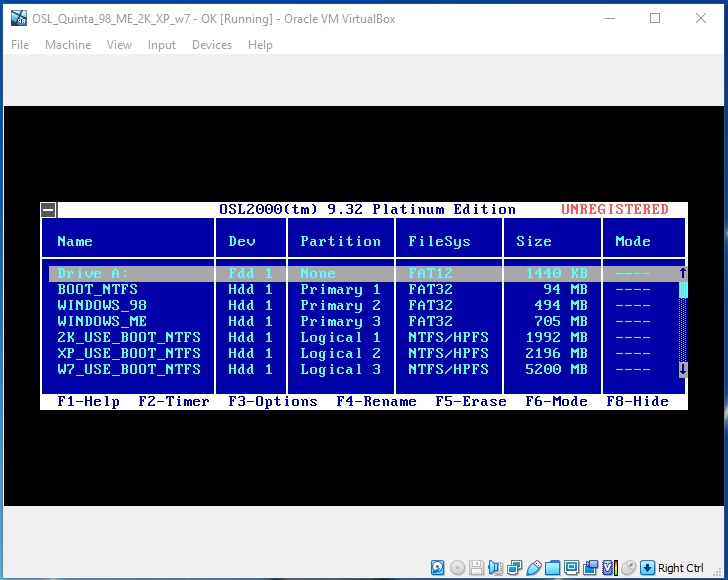
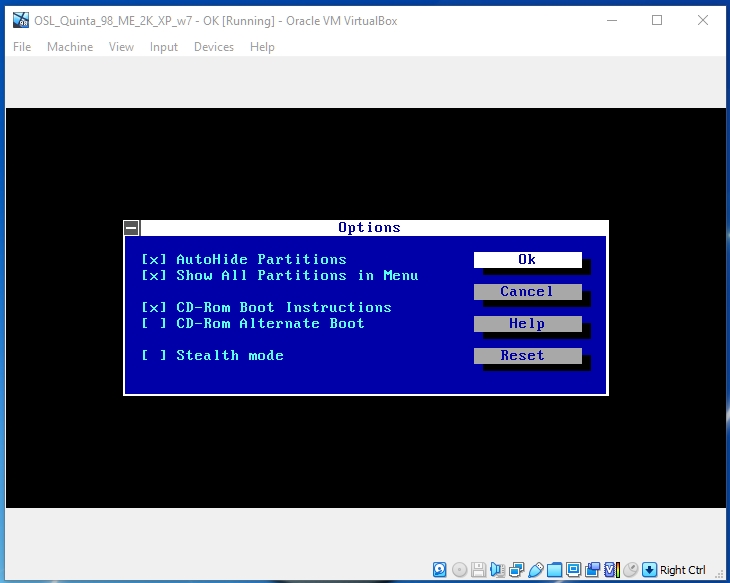
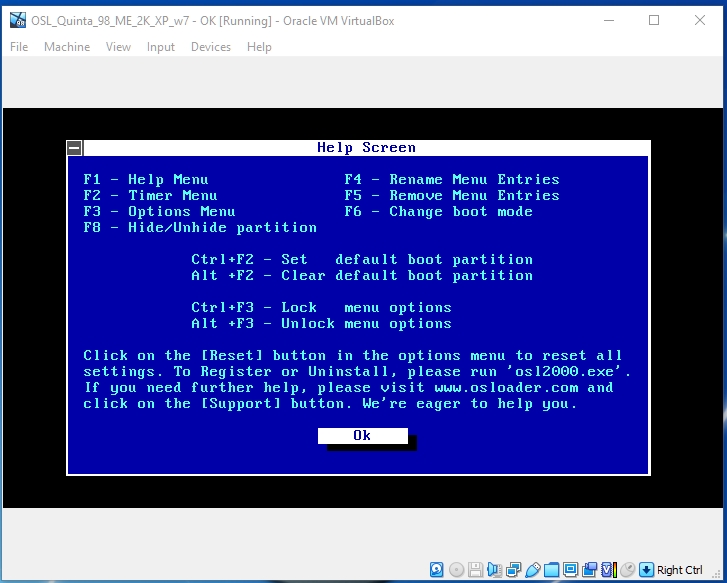
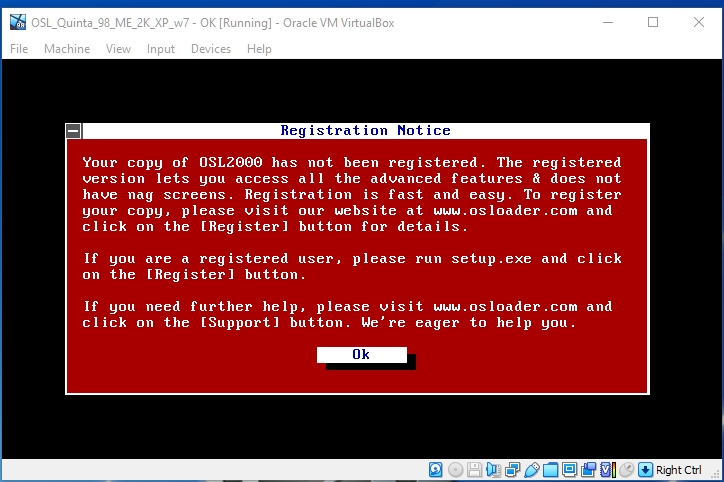
XOSL:
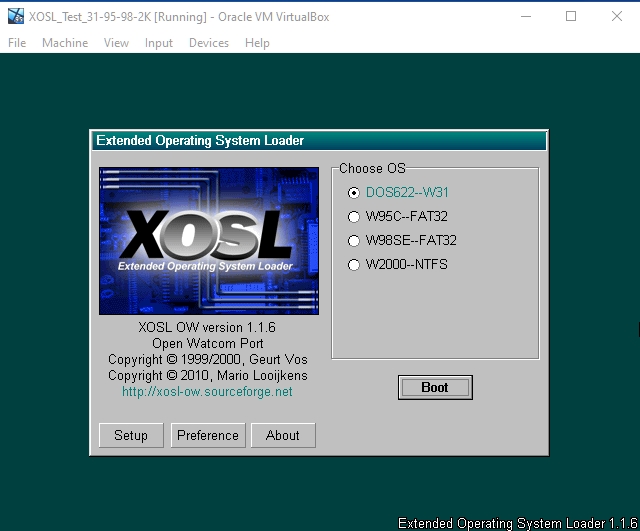
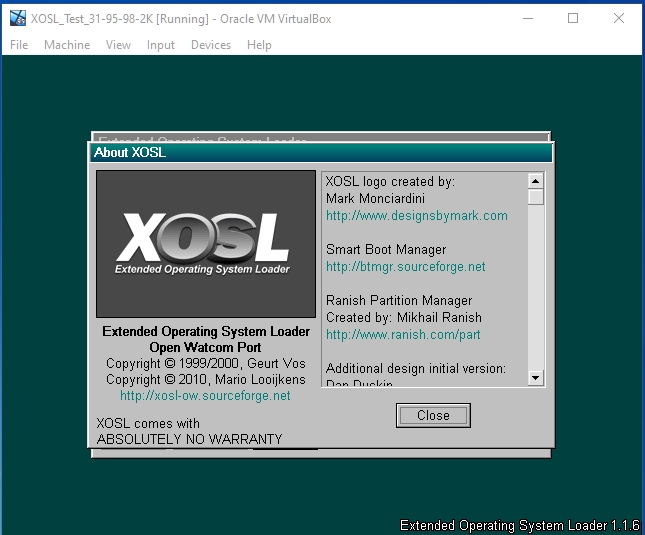
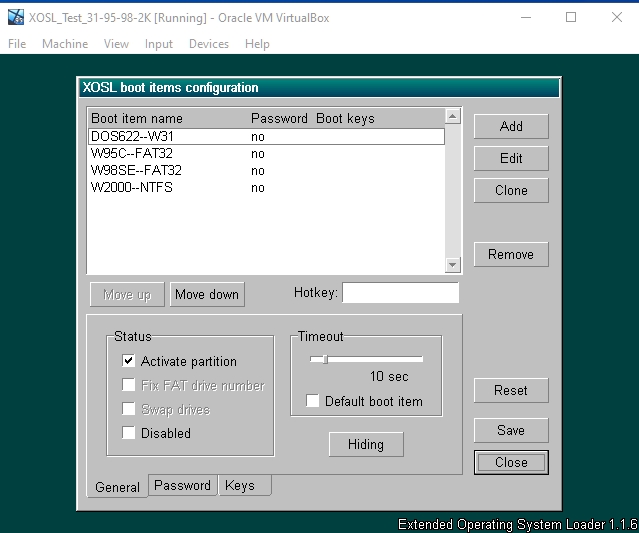
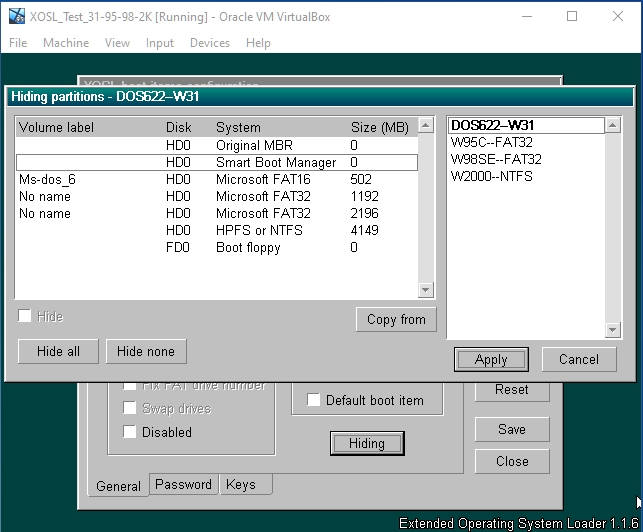
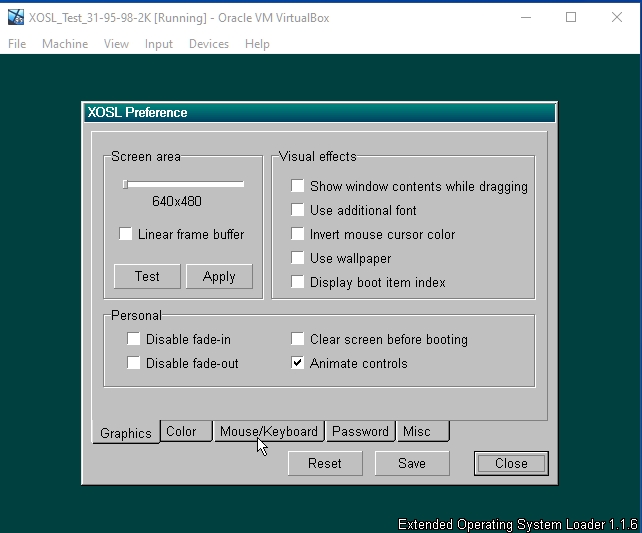
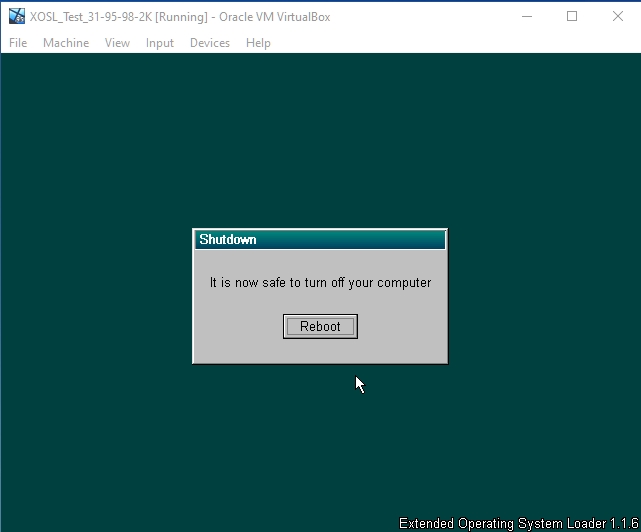
Bootit NG:
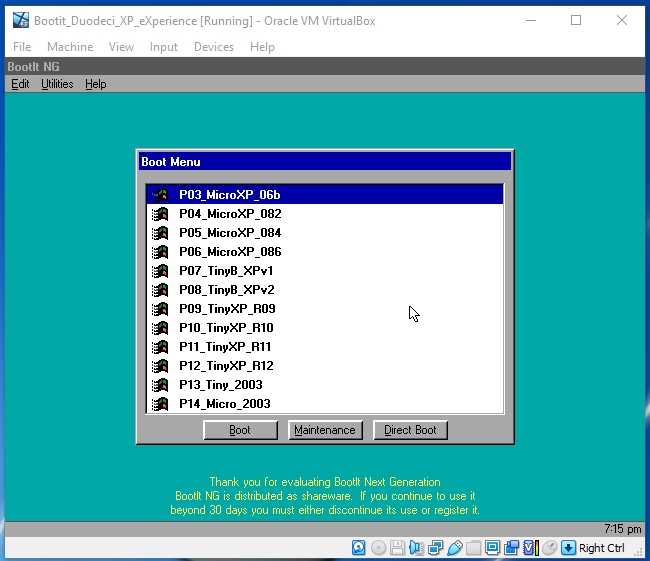
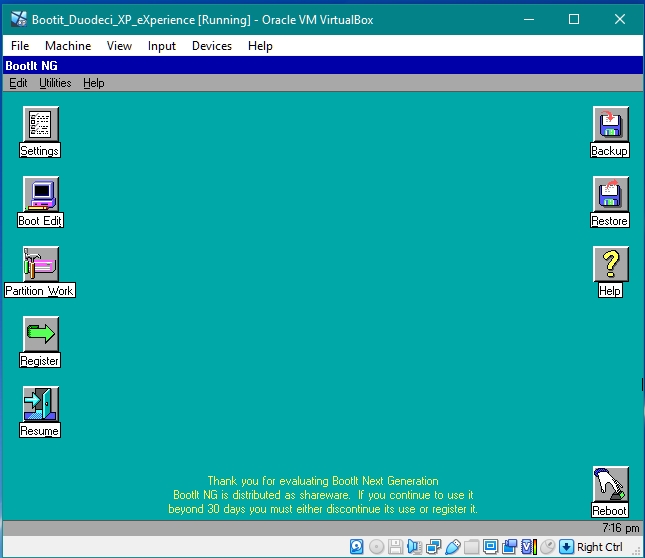
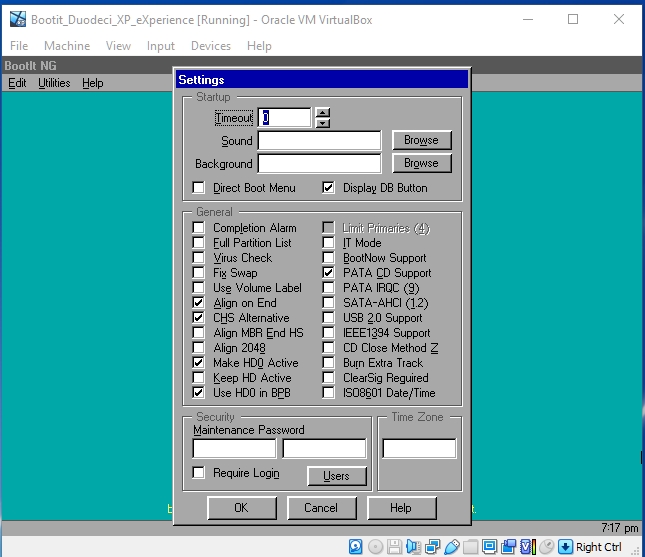
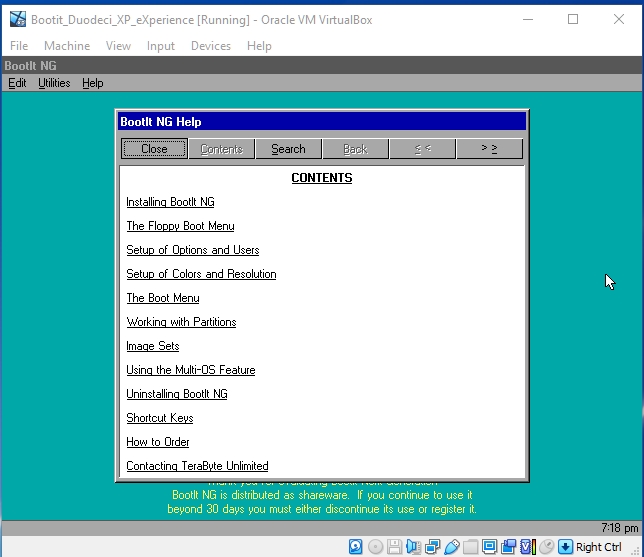
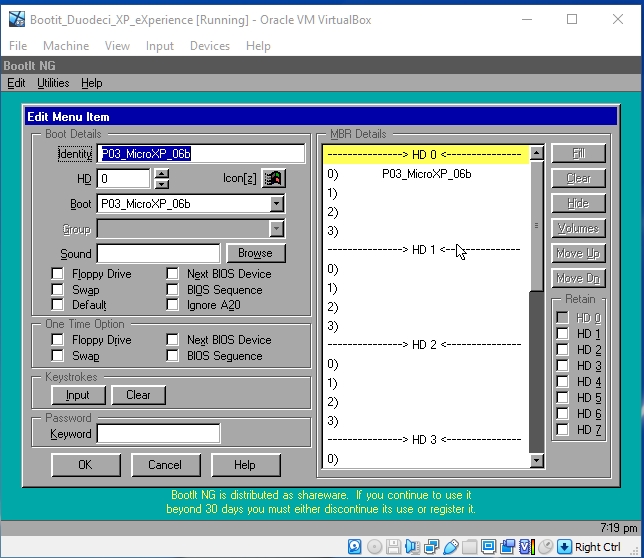
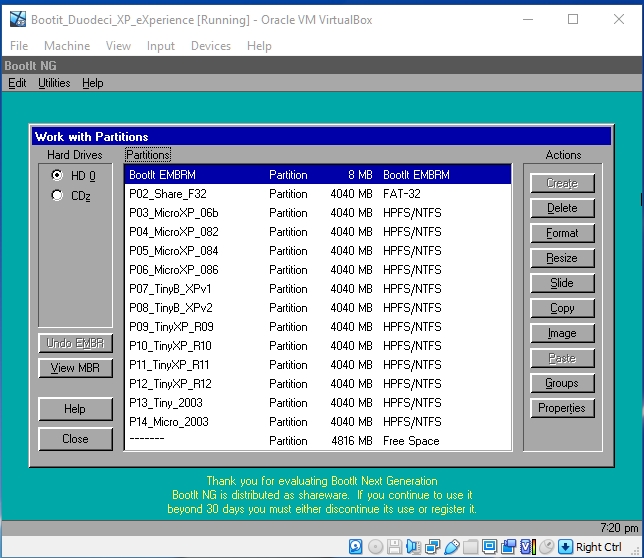
< Go Back